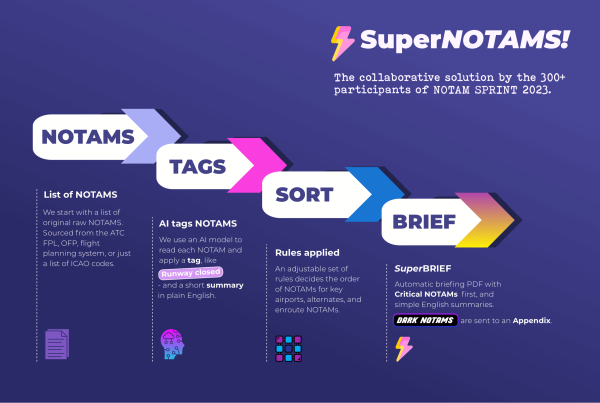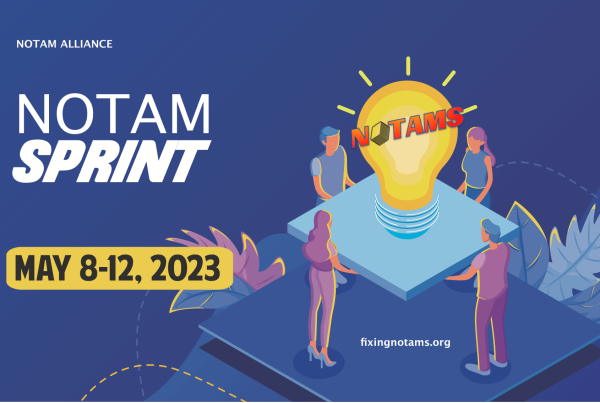Here is where the thinking is at: There’s one simple thing we need to fix. The underlying data.
If the NOTAM data is structured usefully, and reliably, then the end user (Pilot, Dispatcher) can be provided with a briefing that meets their needs. Most of us get our flight plans and Notams via a 3rd party service, like: Lido, Jetplan, ARINC, UV, Navtech, Sabre, or a custom airline system. We may also get NOTAMs via an app like Foreflight. All use an underlying data service.
There are two ways to think about Notams.
THE NOTAM DUMP
Right now, we get everything. Every change is issued as a Notam, and all of these changes add up to a long list of cranes, birds, tiny obstacles, grass cutting, foxes, … and occasionally something critical like an airport closure, which we then miss. Essentially, we get a NOTAM DUMP. We can try to filter a little, but Q-codes are unreliable, and in the ICAO standard format, there are several free text fields that are different every time. I have no real choice but to get a Notam Dump, or I risk missing something big.
THE NOTAM BRIEFING
If we have a useful and reliable data structure, we could apply a Query and Response approach to Notams, which means we can create a custom NOTAM BRIEFING. This is also allows for a shift in mentality. If my flight planning system spits out a list of Notams for KMCO (Orlando), then I am expecting to see everything. I don’t get to decide if I want grass cutting and fireworks in that list, or not. But if I apply a Query/Response approach, then I expect only to get the Notams I determine as important to my flight. I take responsibility for making the right query. I can choose to not ask about obstacles, unlighted towers, birds, and grass cutting. I can choose what is a priority, and see runway and airport closures first.
The beauty of this approach is that the authorities that want to keep filling the system with garbage (again, foxes and fireworks) because they fear reprisal if they don’t, can happily continue to do so. It doesn’t matter. Unless I chose to query for foxes and fireworks, I won’t see them.They can be sorted and displayed in order of priority. Big stuff first. CAPS can be converted automatically. CODES can be transformed into plain English. The number of NOTAMs becomes irrelevant. Nobody complains to Google that there are too many web pages in their index.We can create graphics, visually depict NOTAMs, and do all the fancy stuff we want.But all of this only works if we have an underlying data format that is useful and reliable. Clear, simple categories instead of Q-codes. Free text only for special situations – everything else standard. Dates and times in a standard format.In the November summit last year, this was the key request from users – make an API, or at least some way to dynamically query the Notam database.
The FAA is moving ahead along these lines with ACS, which is planned to go live in July 2021. You will be able to build your own queries. But that’s one of the 192 countries that pump out NOTAMs. We need the FAA advancements to be matched by the rest of the world.








